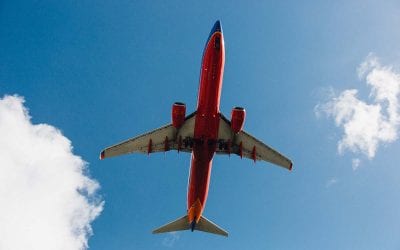Use these wildlife viewing rules when observing or photographing wildlife in the natural world.

Muskox at Renodde, Scoresby Sund, Greenland Copyright © 2023, NSL Photography. All Rights Reserved.
More and more travelers are choosing to travel to national parks and remote locations such as Greenland, Central and South American rainforests, the Galapagos, and the African Savannah to experience wildlife viewing.
Unfortunately, on such a trip, it only takes one person who behaves badly and selfishly and is unwilling to follow commonsense rules and directions to ruin parts or all of any wildlife journey.
Many readers have contacted me over the years complaining about “idiots,” as they called them, who ruined important moments on their trips of a lifetime to see wildlife, such as the Galapagos or Antarctica. As a participant and trip leader, I’ve traveled across the globe to see and photograph wildlife in their natural habitat. Unfortunately, I’ve encountered thoughtless participants far too often.
In Greenland, I encountered a thoughtless traveler who ruined a rare opportunity to see muskox for most of the expedition ship’s passengers.
Several years ago, I was traveling in Greenland by ship. On the cruise, we stopped and landed at Renodde by Zodiac. Renodde is well known for its population of muskox. Both male and female adults have long curved horns, average 4–5 feet high, and weigh from about 330–880 pounds.
Despite their size, muskox are extremely timid when around humans.
I was in the first landed group. There were twelve of us. Our group leader reminded those with cameras to put them in silent mode. Each person was told to speak in whispers or use hand signals. We hiked for more than a mile and climbed up to the top of a sharp ridge, carefully staying downwind from the plateau ahead of us. We reminded the group to stay low, then slowly edged our heads above the ridgeline.
There was a male muskox below us. It was only 150 feet away. To have one that close is pure luck. It was one of four muskoxen, with the others about 1,000 feet away.
The ridge topography made photographing the muskox difficult. I silently crawled to a better shooting position, bringing two others. We stayed hidden. I made about a dozen quality images when it happened.
An unthinking group member stood erect, upset with his view and apparently thinking that the muskox wasn’t paying attention. His entire six-foot frame was visible. The muskox immediately took off at a gallop. For the remainder of our time on Renodde, the closest muskox we saw was at least 2,000 feet away.
It only takes a moment of selfishness for a traveler to ruin a wildlife viewing opportunity for the rest of their group.
It only took a second of disrespectful behavior to ruin the day for the other 80-plus passengers who hadn’t yet made it to the plateau. Never putting the muskox under great stress is something important to avoid. If enough people behave like that man, the area’s muskox could be frightened enough to stay permanently away from this critical food area on Renodde, reducing their survival chances.
If you’re going on a trip to view or photograph wildlife, here are 12 rules of etiquette that I follow and strongly suggest that everyone adopts to make any journey to see the natural world a successful and great time for everyone.
Cellphone rings, notifications, or conversations must be avoided when viewing wildlife. They can startle the wildlife and run them off.

A loud or even low-volume ringing cell phone can easily startle wildlife near you, causing them to scurry and be under stress. It can substantially reduce opportunities to see wildlife up close. In addition, unless it’s an emergency, stay off the cell phone. While viewing wildlife, if you must use your cellphone, text and do it silently by typing, not dictating.
Garbage in, garbage out:
Leave no trace of yourself in the wild. Whatever you bring in, take it out with you. Food wrappers and refuse should be packed and properly disposed of back in civilization. The refuse, if left behind, could hurt the wildlife.
Leave no trace:
It isn’t enough to leave nothing behind. In the wild, everyone needs to be aware of their surroundings at all times to ensure they don’t damage or disturb any of the habitats through which they travel. Even small actions like removing branches near nests or clipping a few stalks of wildflowers to get a cleaner photo should be avoided, as they can be disruptive and harmful.
Harming or stressing local wildlife habitat can destroy essential biological systems for wildlife for decades or possibly forever.
Beware of fragile habitat:
Never harm or stress habitat. A disturbed or damaged habitat can seriously interfere with the normal functioning of biological systems upon which the local wildlife depends for survival.
Commonsense:
When you’re in a wildlife area, you are a guest. Use your common sense and best judgment to act like the best of guests.
Go slow and go quietly:
Moving rapidly and noisily in wildlife areas can and likely will cause animals to secret themselves and keep an extra distance from you, reducing your chances of a quality view or photograph.
Use whispers or, better yet, hand signals:
Staying quiet while in the wild is critical if you want a chance at quality and close viewing of wildlife. Noise from humans or human activity, particularly when unexpected, will engender fear in most wildlife. Anytime you can substitute hand signals for oral communication, even whispers, will help you see more wildlife, perhaps even close up.
Always stay away from young wildlife. Their parents can be dangerous while protecting their young.
Keep a distance away from all nests and young:
For safety’s sake, stay away from nests and young animals. Parents are generally highly protective of their young. Large animals like lions, bison, moose, and bears are hazardous if you go anywhere near their young. Even some large birds like Canada geese should not be trifled with by approaching their goslings. They can take your finger off.
Wait your turn instead of pushing ahead of others you’re with to see better:
It’s obnoxious to push people out of the way to get a better view for yourself. Everyone needs to share good viewing positions. Don’t photobomb anyone by jumping in front and becoming part of the hippo, elephant, bird, etc., photo someone is trying to photograph.
Give others a chance by not staying in front for too long:
This is the corollary to not pushing others out of the way to get to the front. Those in front need to be sure that they rotate back to give others a chance to get a great view and a wonderful photograph.
Stay downwind if possible:
Many animals have a powerful sense of smell, so staying downwind to hide your presence is often essential.
Even clothing choices matter when you’re out to view or photograph wildlife.
Clothing and gear choices matter:
Most birds, for example, have superb color vision due to their eye structure. You don’t want to wear any bright and particularly neon colors when traveling to view birds. It’s always better to wear clothing that helps you blend into your surroundings. Hats, especially wide-brimmed ones, are particularly helpful because they break up your silhouette, making it more difficult for animals to recognize you as a human.

(Image: Muskox at Renodde, Scoresby Sund, Greenland Copyright © 2023, NSL Photography. All Rights Reserved.)
READ ALSO:
Join Travelers United — Membership includes a top cybersecurity package with a Swiss global data vault
Restaurant fees, like resort fees, are meant to deceive consumers – especially tourists
After many years working in corporate America as a chemical engineer, executive and eventually CFO of a multinational manufacturer, Ned founded a tech consulting company and later restarted NSL Photography, his photography business. Before entering the corporate world, Ned worked as a Public Health Engineer for the Philadelphia Department of Public Health. As a well known corporate, travel and wildlife photographer, Ned travels the world writing about travel and photography, as well as running photography workshops, seminars and photowalks. Visit Ned’s Photography Blog and Galleries.



